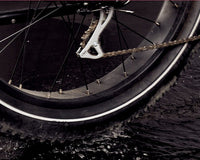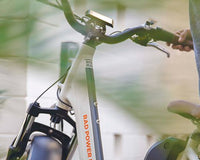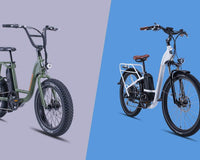As our friends at Electrek have reported, California has taken steps to make it easier for some residents to swap gas guzzlers for ebikes.
Governor Gavin Newsom recently signed legislation to include ebikes in Clean Cars 4 All, a state voucher program that encourages drivers to trade old, high-emission offending cars for subsidies that can be put toward cleaner transportation options.
While the decision is certainly a step toward easing congestion and lowering pollution, it's not as clear-cut as it may seem.
If you’re a Golden State resident eyeing a voucher, here are five key things you need to know.
1. Ebike vouchers won’t be available until next year.
It may be tempting to scrap your old car right away, but ebike vouchers won’t be good to go until 2020.
“When laws are passed, they always go into effect the following January, so this isn’t an automatic change,” Linda Khamoushian, the Senior Policy Advocate for the California Bicycle Coalition, told Rad Power Bikes. “It’s not, unfortunately, something where someone can go in right now and get an ebike.”
Khamoushian explained that January will fall in the middle of the state’s fiscal year, meaning that even after the rules are formally sorted out, they won’t go into effect until the next budget goes into effect, likely in the summer.
2. The Clean Cars 4 All program isn’t statewide.
Yes, the Governor has given the go-ahead, which would certainly seem to imply that vouchers will be accessible all across California. But that’s just not the case.
For the purposes of managing pollution, California is divided into 22 air districts. Of these districts, only those that meet a certain population threshold are eligible to oversee Clean Cars 4 All exchanges.
So far, these include:
- The Bay Area Air Quality Management District
- The San Joaquin Valley Air Pollution Control District
- The South Coast Air Quality Management District
- The Sacramento Metropolitan Air Quality Management District (Coming January 2020)
- The San Diego County Air Pollution Control District is also technically eligible but has not yet adopted the program.
Do you live in a district that qualifies? Check out this map to see.
3. Your ebike voucher depends on your household income and the age of your car.
Let’s say you live in an eligible district and are ready to wait until the new rules are implemented. There are still a few more hurdles you’ll need to clear before securing your voucher.
Clean Cars 4 All was crafted primarily to help low-income residents, so your income is determinant in how much the state will ultimately cover. If you are in a household that makes over 400 percent of the Federal Poverty Level, you may not even qualify at all.
The age of your car and how long you’ve owned it are also major factors. For example, if you live in the San Francisco Bay Area, your vehicle is required to be a 2004 model or older. If you’re in Fresno, your car must be over 20 years old.
Eligibility requirements vary for each district, so make sure to check online to see if you make the cut.
4. No one’s sure how much the vouchers will be worth.
So how much can you expect your voucher to be worth? Well, it’s hard to say.
Clean Cars 4 All offers two types of vouchers, one for environmentally friendly cars and the other for alternative forms of transportation, including public transit, ride-shares and, under the new rules, ebikes.
Participants have been able to receive up to $9,500 for clean cars or other electric vehicles, but those who’ve opted for the alternative have previously received a maximum of $4,500.
It’s too soon to say if this rate will continue to apply to ebikes, according to Khamoushian.
“With ebikes that can change,” Khamoushian said, noting that the exact amount was not set by the new law.
5. Your support matters.
While there’s a lot of uncertainty over the fine print, one thing is clear: your voice matters. Like, a lot.
“When we see more demand, then there's a bigger argument for increasing the budgets for these programs,” said Khamoushian.
Khamoushian noted that when her organization first floated the vouchers, lawmakers were skeptical, telling the California Bicycle Coalition that they doubted many residents would sign on.
So far, it looks like the exact opposite will be true.
Even though there has been no formal marketing, Khamoushian reports that she received dozens of inquiries within days of the bill being signed, something that bodes well for the program’s future.
“We've already surpassed that mark to demonstrate that, hey, people are interested and they're really curious about how this could happen,” Khamoushian said.
As the voucher program picks up steam, there will be plenty of time for Californians to sound-off, perhaps with a message to their local legislators.








